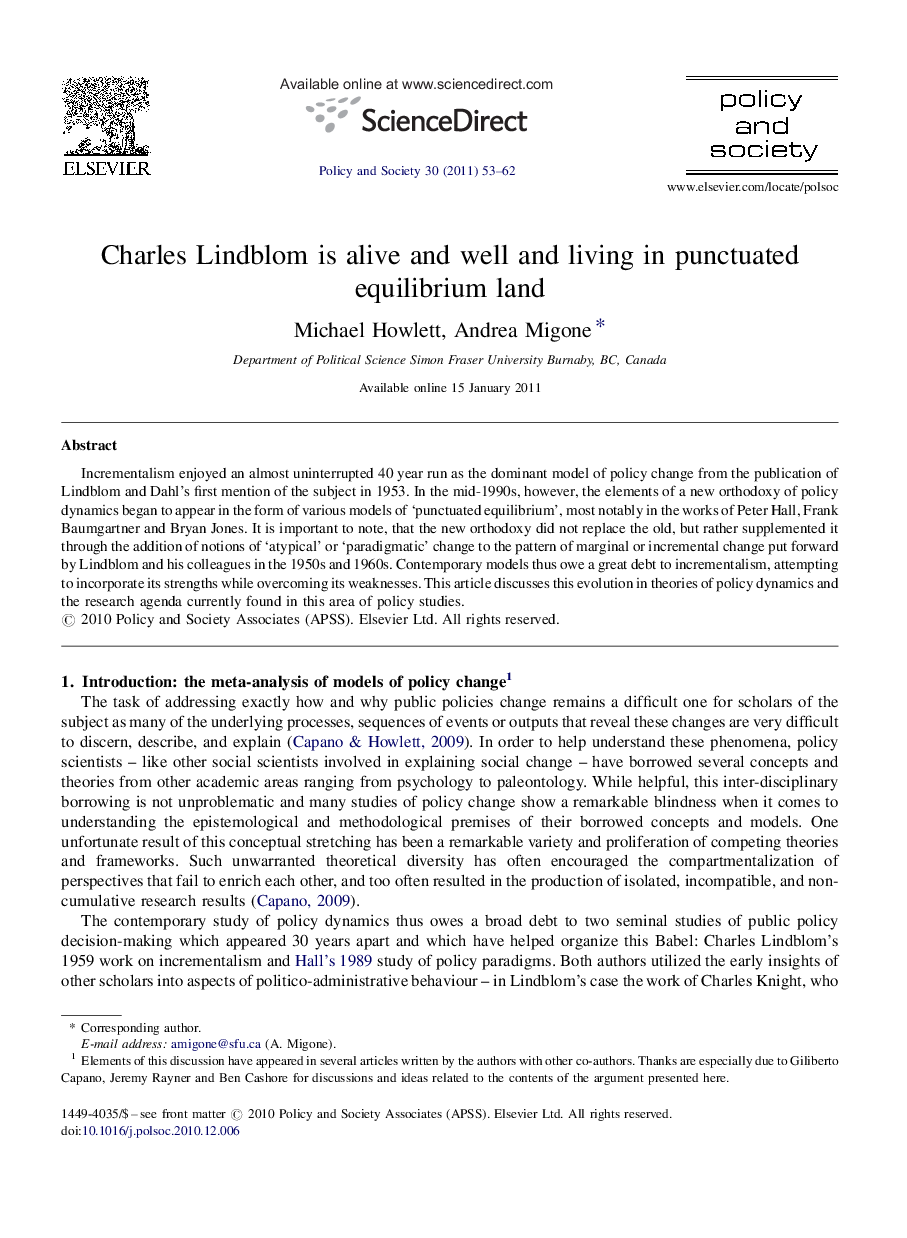| Article ID | Journal | Published Year | Pages | File Type |
|---|---|---|---|---|
| 1061545 | Policy and Society | 2011 | 10 Pages |
Incrementalism enjoyed an almost uninterrupted 40 year run as the dominant model of policy change from the publication of Lindblom and Dahl's first mention of the subject in 1953. In the mid-1990s, however, the elements of a new orthodoxy of policy dynamics began to appear in the form of various models of ‘punctuated equilibrium’, most notably in the works of Peter Hall, Frank Baumgartner and Bryan Jones. It is important to note, that the new orthodoxy did not replace the old, but rather supplemented it through the addition of notions of ‘atypical’ or ‘paradigmatic’ change to the pattern of marginal or incremental change put forward by Lindblom and his colleagues in the 1950s and 1960s. Contemporary models thus owe a great debt to incrementalism, attempting to incorporate its strengths while overcoming its weaknesses. This article discusses this evolution in theories of policy dynamics and the research agenda currently found in this area of policy studies.
